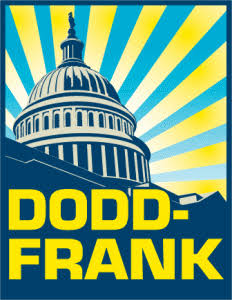Dodd- Frank Wall Street Reform and Consumer Protection Act, better known as Dodd Frank, was signed into federal law by President Barrack Obama in 2010. The act, named after Senator Christopher J. Dodd and U.S. Representative Barney Frank (the sponsors of this legislation), is a comprehensive financial regulation which came into existence as an aftermath of the Great Recession of 2008. It placed upon a number of restrictions on various financial institutions to avoid the circumstances leading to the recession. Learning from the financial crisis of 2008, the Act aimed to prevent the fall of big financial institutions which are deemed “too big to fail” (just like Lehman Brothers in 2008). The bankruptcy of Lehman Brothers, a global financial firm, is considered to be one of the major factors which plummeted the US economy into Great Recession.
One of the main elements of the financial crisis was the failure of banks and other financial institutions. Many banks and financial institutions were engaged in speculation of real estate prices by holding mortgages backed by that real estate. However, when the housing bubble of US burst in 2008 (that is, the prices of houses suddenly dipped from their initial very high prices), a large number of house owners found it very difficult refinance their loans and as a result, the number of defaulters started rising. This triggered a domino effect- financial institutions were pushed to bankruptcy, people pulled out their money as they lost all confidence on financial institutions, banks found it difficult to raise funds, potential borrowers found it difficult to secure a loan and as a result investment, demand, supply, employment rates and overall economic growth came down crashing.
Seeking to avert similar situations, the Dodd-Frank brought in a string of regulatory reforms and provisions.
Creation of Financial Stability Oversight Council (FSOC)- The Dodd- Frank’s one of the main objectives is to reduce risk-takings which might affect the entire financial system. The FSOC, which comprises members from Federal Reserve, the Securities and Exchange Commission and Consumer Financial Protection Bureau (CFPB), keeps an eye on the growth of the banks. If any bank gets ‘too big’ in its view, it regulates them to increase their reserve requirement (to reduce lending and investing). It also makes plans for speedy break up of large financial institutions/ total shutdown in case they become insolvent.
The Volcker Rule– Perhaps, the most widely criticised (by the banking community) rule of the Dodd- Frank. It came into effect in 2015, five years later after being proposed. It puts restrictions on risky speculations done by big banks with their own funds. This was done to prevent banks from engaging in hedges (an investment done to limit the risks of another investment) which might put customer’s money in danger. However it makes an exception: it allows banks some trading if it needs to run its business.
Creation of Federal Insurance Office (FIO) – The FIO was set up to monitor the insurance industry and industry policies. This office was established to recognize big insurance companies whose performance could affect the entire economy. This was set up, especially, after witnessing the failure of AIG (American International Group, which is a multinational insurance cooperation) when it was trapped in a liquidity crisis during 2008.
Creation of Consumer Financial Protection Bureau (CFPB) – The CFPB was formed to protect the consumers from ‘unscrupulous’ business activities of the banks; mainly by restricting banks from engaging in risky trading and providing access to information about mortgages in simple English along with a 24 hours toll-free consumer service number to report any complaint.
Some other reforms which were brought into effect by this law include- regulation of derivatives by Commodities Future Trading Commission in a bid to make the trading of derivatives transparent, making credit rating companies like Standard and Poor’s submit their ratings for review to Securities and Exchange Commission (SEC) and giving SEC to de-credit any agency if it submits misleading ratings and empowering people to report any breach of the Act’s provisions to the Government for a financial reward.
After being passed in 2010, Dodd-Frank has received a mixed reaction. Some people view it as a failure and ‘too restricting for some and too lenient for others’. They hold the view that the big banks are still growing bigger while the Act has suppressed the growth of small banks. The others hold the opinion that the Act is, in fact, very efficient, especially in protecting the consumers from bad loans. The provision of systematically taking hold of insecure institutions, they say, can prevent other institutions from spiralling into any potential depression. However, it would be hard for either side of the group to make predictions about the failure/success rate of the Act with the election of Trump, who plans to “do a big number” on Dodd-Frank. Only time can tell what happens to Act.
By Arushi Sharma




